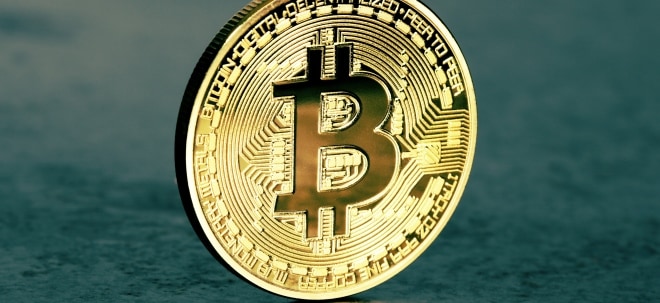Why analysts see $5,000 gold price
Gold prices are poised to reach new heights in 2026 with leading forecasters projecting levels between $4,400 and $5,300 per oz. as investors double down on hard assets amid geopolitical turmoil, looser monetary policy and surging central bank demand.JPMorgan sees gold topping $5,055 in the final quarter of 2026, while Goldman Sachs forecasts the same target supported by an average annual price of $4,275. Morgan Stanley projects gold at $4,400 by year-end 2026. The forecasts reflect a rare consensus among Wall Street analysts, who cite macroeconomic instability and record central bank buying as the key pillars of a secular bull market.Gold industry sees price rising to near $5,000/oz over 12 monthsThe structural forces driving gold are far from exhausted, Sprott Asset Management argues in its November 2025 Precious Metals Report. It describes how investors are exiting assets like bonds denominated in dollars and stocks vulnerable to currency devaluations towards precious metals and cryptocurrencies.“Gold and silver reached new all-time highs in October, reflecting a broadening debasement trade as investors rotate toward hard assets to preserve purchasing power and hedge systemic and geopolitical risks,” it said. The firm adds that major economies are entering a period of “fiscal dominance, in which fiscal priorities shape monetary policy,” prompting more allocations to tangible stores of value.BreakoutThe precious metal’s breakout began in earnest in late 2025, as gold surged past the $4,000 threshold and briefly hit $4,381 per oz. in October, a record high. That month also marked gold’s first-ever monthly close above $4,000. That run capped a year in which the metal gained 58% by Nov. 11 and outperformed virtually every major asset class. The price was $4,131.54 per oz. on Thursday afternoon.With the US government shutdown likely ending as soon as today, gold has surged to $4,100 this morning. Where do you see the closing price on December 31, 2025?— MINING.COM (@mining) November 10, 2025Driving the rally are expectations that the US Federal Reserve will continue cutting interest rates in 2026. The US central bank cut interest rates twice by 25 basis points in 2025. The second cut on Oct. 29 lowered the federal funds rate to 3.75%–4%, the lowest in three years. The Fed next meets Dec. 9 with the outlook uncertain.Falling real yields and a weaker dollar have historically correlated with stronger gold prices. Morgan Stanley notes that since the 1990s, gold has averaged a 6% gain in the 60 days following the start of Fed easing cycles.“Investors are watching gold not just as a hedge against inflation, but as a barometer for everything from central bank policy to geopolitical risk,” Amy Gower, a commodity strategist at the firm, said in an Oct. 22 note.Central banksJPMorgan and Goldman Sachs attribute their bullish forecasts in part to sustained central bank accumulation. JPMorgan projects global central bank and investor demand averaging 566 tonnes per quarter through 2026. Goldman expects central banks to purchase roughly 760 tonnes annually in 2025 and 2026, well above historical norms.The World Gold Council reports that 95% of central banks anticipate global reserves will continue rising, with 43% planning to increase their own gold holdings in the next year.Sprott highlights the pivotal role of official-sector demand in shaping the current cycle. Since 2013, central banks have bought 8,200 tonnes of gold, dwarfing exchange traded fund inflows over the same period.“Over the long term, central banks are the primary anchor of gold’s secular price trend,” the firm says. The trajectory accelerated after Russia’s 2022 reserve freeze, which spurred many emerging-market banks to diversify away from US dollar assets.“The persistent official-sector bid effectively creates a central bank gold put,” – a backstop created by steady government buying that cushions price declines, much like a financial put option limits downside risk, Sprott suggested. A put gives the buyer the right to sell a stock at a specified price by a certain date.This structural backdrop helps to limit drawdowns and reinforce the long-term bullish backdrop. It echoes previous bull markets but with more entrenched fiscal imbalances. Sprott’s Paul Wong observes that gold’s advance is “not speculative,” but driven by deep-seated concerns about debt, deficits and fiat currency reliability.“The forces driving deficits and currency debasement are structural rather than cyclical,” Wong writes. “The current trend is likely to persist.”World BankEven the World Bank, typically conservative, forecasts an average gold price of $3,575 an oz. in 2026, up from $3,410 in 2025. Its October Commodity Outlook states: “Extraordinarily high central bank purchases are a special feature of the current phase.”Though the bank expects a plateau beyond 2026, it warns that any geopolitical shock could push prices well beyond its baseline scenario.While the wider outlook skews bullish, risks remain. Gold’s rapid ascent has left it technically overbought at times. Morgan Stanley flagged a 6% one-day plunge in October as a sign of temporary excess. Buying an asset near its all-time high carries the risk of a significant correction.“A reversal and digestion is healthy for gold and doesn’t change our multi-year structural bullish view,” Goldman Sachs said after the correction.Waning demand?Others worry about demand destruction if prices remain elevated. “As the price of gold climbs higher, central banks will need to purchase less of it to achieve their reserve targets,” Morgan Stanley cautioned.Investing heavily in a non-yielding asset like gold means forgoing potential growth opportunities in other markets, such as the strong performance seen in some tech stocks. A continued strong performance in the broader stock market could lure investors away from gold.Gold now a ‘momentum/meme’ asset, says bond veteranNevertheless, few expect a sustained downturn. Sprott concludes that gold remains in the early innings of a longer cycle: “It is difficult to see how the current gold rally ends beyond a short-term overbought correction. The debasement trade is still in the early stages of a longer structural cycle.”With gold forecast to average over $4,000 in 2026 and possibly climb toward $5,300, analysts agree that systemic risk, fiscal expansion, and a softening dollar provide a sturdy foundation for continued strength. As central banks lead the way, investors are increasingly following suit, transforming gold from a tactical hedge into a strategic core asset.Sponsored: Secure your wealth today — buy gold bullion directly through our trusted partner, Sprott Money.Weiter zum vollständigen Artikel bei Mining.com
Quelle: Mining.com


